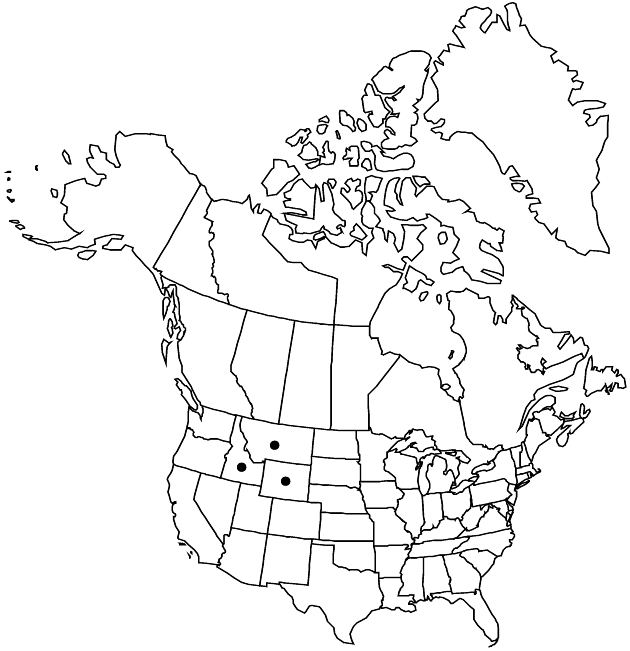Difference between revisions of "Erigeron gracilis"
Mem. New York Bot. Gard. 1: 404. 1900.
FNA>Volume Importer |
FNA>Volume Importer |
||
| Line 51: | Line 51: | ||
|publication year=1900 | |publication year=1900 | ||
|special status= | |special status= | ||
| − | |source xml=https://jpend@bitbucket.org/aafc-mbb/fna-data-curation.git/src/ | + | |source xml=https://jpend@bitbucket.org/aafc-mbb/fna-data-curation.git/src/f50eec43f223ca0e34566be0b046453a0960e173/coarse_grained_fna_xml/V19-20-21/V20_769.xml |
|tribe=Asteraceae tribe Astereae | |tribe=Asteraceae tribe Astereae | ||
|genus=Erigeron | |genus=Erigeron | ||
Revision as of 20:30, 16 December 2019
Perennials, 5–20 cm; rhizomatous, fibrous-rooted, forming diffuse systems of slender, rhizomelike caudex branches. Stems ascending (bases usually purplish), glabrous or sparsely strigose (or hairs loosely spreading), eglandular. Leaves basal (persistent) and cauline; basal (purplish) and proximal cauline blades oblanceolate to oblong, 20–40(–90) × 1–3(–5) mm, cauline reduced distally, margins entire, glabrous or sparsely strigose (or hairs loosely spreading), eglandular. Heads 1. Involucres 5–7.5 × 10–15 mm. Phyllaries in 2–3(–4) series (margins and tips often purplish, loose, linear-lanceolate, apices spreading), sparsely strigoso-hirsute to strigose (hairs appressed or slightly loose), sometimes minutely glandular. Ray florets 40–100; corollas blue to pinkish purple, 7–14 mm, laminae not coiling or reflexing. Disc corollas 4.1–5.6 mm. Cypselae 2 mm, 2-nerved, faces sparsely strigose; pappi: outer of setae, inner of 14–21 bristles. 2n = 18.
Phenology: Flowering Jun–Aug.
Habitat: Moist slopes, creek bottoms, sagebrush meadows
Elevation: 2200–2400 m
Distribution

Idaho, Mont., Wyo.
Discussion
Erigeron gracilis “differs from E. ursinus in the strigose and scarcely glandular pubescence of the involucre, narrower and less herbaceous phyllaries, narrower and on the average longer disc-corollas, simple or nearly simple pappus, narrower ligules, on the average, and ordinarily narrower and slightly hairier leaves. E. gracilis grows at lower elevations than E. ursinus, in a drier habitat, and has a much more restricted range” (A. Cronquist 1947, p. 162). The two species are sympatric in northwestern Wyoming.
Selected References
None.